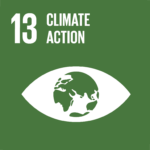The mainstream fashion industry is built upon the exploitation of labour and natural resources. As global citizens, we all have the power to take action.
This year, Fashion Revolution is encouraging people worldwide to unite in support of a new fashion system that is regenerative, restorative, and revolutionary. During Fashion Revolution Week, the foundations for new regulations on living wages for those who create our garments will be laid, brands will be urged to alter their focus away from unending expansion, and consumers will be pushed to examine the true value of what we buy.
RELEVANT SUSTAINABLE GOALS



HOW TO GET INVOLVED IN FASHION REVOLUTION WEEK 2022
Fashion Revolution Week is (again) providing us with a week of opportunities to take action. Here’s how you can get involved :
Attend An Event
There are a plethora of events to attend between April 18 and 24. From talks, panel discussions, clothes swaps, workshops, fashion shows and more throughout Fashion Revolution Week. In Singapore, live-streamed presentations, habit-shifting workshops and panels including A Stubborn Bloom, Raffles College, Lasalle College of the Arts, ZERRIN and many more.
To view the full calendar, head to the events page here.
EVALUATE AND RE-ASSESS YOUR WARDROBE AND FASHION HABITS
Even after Fashion Revolution Week is over, you should continue to educate yourself about where your clothing comes from and ask yourself, how much did you pay for *insert favourite clothing item here*? And how much is it worth to you?
Look up the Fashion Transparency Index before making your next purchase to find out what the brand (designer, business, etc.) is doing to make positive change. Don’t stop asking until you receive an answer.
ASK QUESTIONS AND HOLD BRANDS ACCOUNTABLE
Hold brands accountable during Fashion Revolution Week and beyond. Here are three questions you should be asking clothing brands :
1. #WhoMadeMyClothes
Slavery, forced labor, gender inequality, and exploitation are just a few of the issues that plague the global rag trade, issues that are often masked beneath elegant fashion shots and glossy advertisements. However, the collapse of the Rana Plaza building sent shockwaves around the world, and for many, it was the first time they paid attention to the people behind the clothes they bought.
Ask : Does the person who made your clothes make a living wage?
2. #WhatsInMyClothes?
Consumers are becoming more aware of the environmental impacts of the fashion industry, from synthetic fibers such as polyester shedding microfibres into the oceans to massive amounts of chemical dyes leaching into rivers and waterways. As a result, they seek out brands committed to environmentally friendly fabrics and processes.
However, when providing precise information on the raw materials, fabric sourcing, and processes involved, the business is notorious for being highly opaque because of the increased knowledge of ‘greenwashing,’ consumers are no longer satisfied with taking the garment label at face value and are demanding more transparency from brands about the true costs of creating the materials.
Ask: What would the world look like if brands restored systems instead of depleting them?
3. #Who Made My Fabrics
We should expect more transparency from fashion firms than merely knowing who the garment workers are. You should also inquire, “Who created my fabric?” during Fashion Revolution Week. to start a conversation about where fabrics and yarns come from and the individuals who cultivated, spun or weaved them.
Exploitative working conditions and how the brand will handle the problem may be revealed by asking a simple question to ensure every worker in the supply chain, from farmers to spinners, weavers, dyers, and finishers, is made visible and humanised.
Exploitative working conditions and how the brand will handle the problem may be revealed by asking a simple question to ensure every worker in the supply chain, from farmers to spinners, weavers, dyers, and finishers, is made visible and humanised.
Ask: Who manufactured my fabric?
So what are you waiting for? Take part in talks, panel discussions, clothes swaps, workshops, fashion shows and more throughout Fashion Revolution Week.
You may also be interested in :
#ThrowbackThursday : What You Need To Know About Intersectionality


